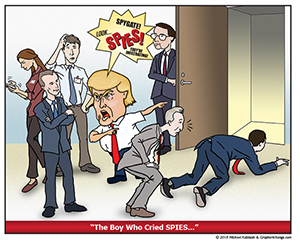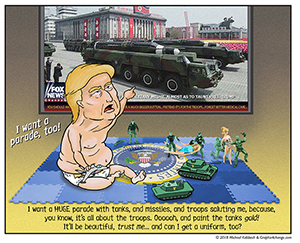The political art of Michael Kabbash
Editorial Cartoons
I have loved political cartoons ever since I was a kid. I didn't always understand them, but I loved looking at the linework and the cartoonish yet often creepy representations of national figures. I was amazed that someone could draw people like the President, governor, or media figures — people whom I was always taught to respect — often in an unflattering or comical light. THAT was radical to me, and still is. Perhaps that's why as a pre-teen I gravitated to comics or cartoons with a more anti-authoritarian streak to them (Calvin & Hobbes, Bloom County and The Far Side were my Holy Trinity, with honorable mention to the Godfather: Gary Trudeau and Doonesbury!).
When I was given the opportunity to curate an art show with a graphic and political bent, I immediately chose to highlight editorial cartoons as an often under-rated art form. The exhibit "Political Lines: Commentary and the Art of Political Cartooning" which ran for a month previous to the 2012 Presidential Election, gave me the opportunity to speak with and meet some of the top names in editorial cartooning, including Daryl Cagle, Tony Auth, Chuck Assay, Eric Aille, Mike Keefe, Signe Wilkinson and Matt Wuerker.
I always considered many of my works to be political cartoons with lots of footnotes, but I envy the ability of these artists to convey an idea with little to no text. As the newspaper industry wanes, so does the careers of some of the greatest artists in the genre. Recently, artist Bill Day's career was saved by an Indiegogo fundraising campaign. These artists voices are too important to be silenced due to changing technology. Check out their work, and marvel at their brilliance.
I'm just playing here, not getting paid to do this, but I'm trying to edit my commentary and let the pictures do more of the talking. Luckily, my Teabagg'rs characters lend themselves to a comic strip format, so I figured they would be a good outlet for this exercise.





















